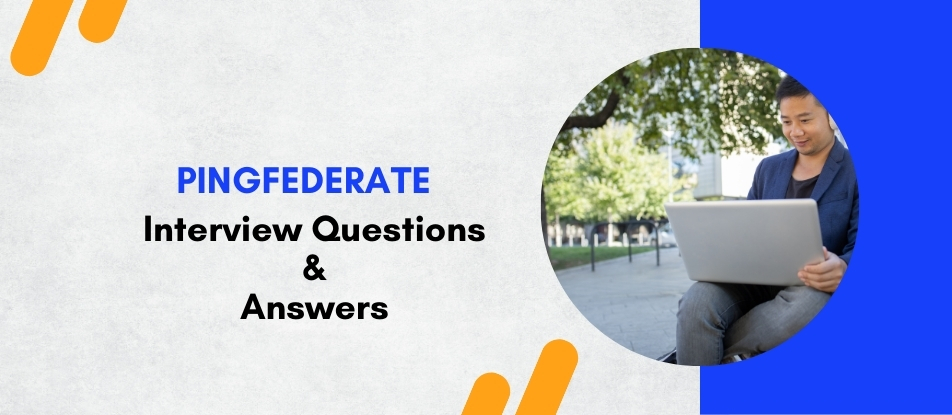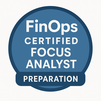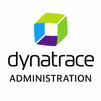
Delve into the essentials of identity management with our PingFederate Comprehensive Training. This course offers a robust exploration of PingFederate’s architecture, setup, and operational management. Learn to configure federation partnerships, implement secure single sign-on (SSO), and utilize OAuth and OpenID Connect for secure API access. Ideal for system administrators and IT security professionals, this training provides practical, hands-on experience with real-world applications to master the PingFederate platform.
PingFederate Interview Questions Answers - For Intermediate
1. What is a policy contract in PingFederate?
A policy contract in PingFederate defines the rules and conditions under which identity data is shared between federation partners. It ensures that data exchange complies with security policies and privacy standards.
2. How is load balancing managed in PingFederate?
PingFederate supports load balancing either through built-in mechanisms or via external load balancers. This helps distribute traffic across multiple PingFederate instances to ensure availability and performance.
3. Explain attribute mapping in PingFederate.
Attribute mapping in PingFederate involves transforming user attributes from the identity provider into attributes understood by the service provider. This mapping is crucial for ensuring that user identities are correctly represented across systems.
4. What is the role of the PingFederate SDK?
The PingFederate SDK allows developers to extend the functionality of PingFederate by creating custom adapters, plugins, and integrations. This SDK facilitates tailored solutions for specific authentication and integration needs.
5. Discuss the significance of session management in PingFederate.
Effective session management is crucial for security and user experience. PingFederate manages user sessions by issuing, validating, and revoking tokens, and by implementing timeouts and session policies to protect against unauthorized access.
6. How does PingFederate ensure data security during transmissions?
PingFederate uses encryption and secure communication protocols such as HTTPS and TLS to safeguard data during transmissions. This prevents interception and unauthorized access to sensitive information.
7. What are PingFederate clusters and why are they important?
PingFederate clusters consist of multiple PingFederate instances working together to provide high availability and scalability. Clusters are essential for ensuring that federation services remain available even under high load or during server failures.
8. How does PingFederate handle identity bridging?
Identity bridging in PingFederate allows organizations to connect disparate authentication systems without requiring changes to user identities or directories. This feature simplifies integration and extends the reach of federation capabilities.
9. What challenges can arise during PingFederate integration and how are they addressed?
Common challenges include compatibility issues, complex attribute mappings, and policy enforcement. These are addressed through thorough planning, testing, and the use of flexible and extensible features within PingFederate.
10. What logging and auditing capabilities does PingFederate offer?
PingFederate provides comprehensive logging and auditing features that record transaction details, system events, and administrative actions. This data is crucial for troubleshooting, monitoring, and compliance purposes.
11. How does PingFederate facilitate regulatory compliance?
By providing features like robust authentication, detailed auditing, and secure data handling, PingFederate helps organizations comply with regulations such as GDPR, HIPAA, and SOX.
12. What are the best practices for deploying PingFederate in large enterprises?
Best practices include using a phased deployment approach, regularly updating security configurations, employing multi-factor authentication, and integrating with existing security infrastructures.
13. Can PingFederate be used for customer identity and access management (CIAM)?
Yes, PingFederate is well-suited for CIAM with features that support scalable authentication, federation, and single sign-on, alongside strong security and compliance capabilities.
14. Discuss the upgrade process for PingFederate.
Upgrading PingFederate involves planning for downtime, backing up configurations, testing in a non-production environment, and applying the upgrade during a maintenance window to minimize impact on users.
15. How does PingFederate support disaster recovery?
PingFederate supports disaster recovery through its clustering capabilities, data replication features, and support for geographic redundancy. These features ensure that identity services can be restored quickly after an outage.
PingFederate Interview Questions Answers - For Advanced
1. Discuss the scalability features of PingFederate in detail.
PingFederate is designed to be highly scalable to meet the demands of large and growing organizations. Its clustering capability allows multiple PingFederate instances to operate as a cohesive federation hub that handles thousands of transactions per second. Load balancing can be used to distribute traffic across these instances, enhancing both performance and fault tolerance. Furthermore, PingFederate's support for stateless operation enables it to scale horizontally by adding more instances without the complexity of managing session states across nodes. This scalability is critical for organizations that experience variable authentication loads and need to maintain high availability and consistent performance.
2. Explain the best practices for securing PingFederate deployments.
Securing PingFederate deployments involves multiple best practices: First, all communications should be encrypted using strong protocols such as TLS to protect data in transit. Second, access to the PingFederate administrative console should be restricted using multifactor authentication to prevent unauthorized configuration changes. Third, regular audits should be conducted to review access policies and configuration settings, ensuring they comply with security standards. Fourth, comprehensive logging and monitoring should be implemented to detect and respond to security incidents in real-time. Lastly, updates and patches provided by Ping Identity should be applied promptly to mitigate vulnerabilities and enhance the system's security posture.
3. How does PingFederate support regulatory compliance, such as GDPR or HIPAA?
PingFederate aids in regulatory compliance by providing robust identity management and security features that align with regulations like GDPR and HIPAA. For GDPR, PingFederate enables the management of user consent and supports the right to erasure requests through efficient identity provisioning and de-provisioning processes. For HIPAA, it ensures that PHI (Protected Health Information) is accessed securely by enforcing strong authentication and encryption. Additionally, PingFederate's detailed logging capabilities allow organizations to perform audits that are often required to demonstrate compliance with these regulations.
4. Describe PingFederate's support for mobile and IoT environments.
PingFederate extends its identity and access management capabilities to mobile and IoT devices through its support for OAuth 2.0 and OpenID Connect protocols. These protocols are well-suited for scenarios involving mobile apps and IoT devices, providing a secure method for issuing access tokens that can be used to authenticate API requests. Furthermore, PingFederate can integrate with mobile device management (MDM) solutions to enforce device compliance before granting access, which is crucial in managing the diverse and potentially insecure landscape of IoT and mobile devices.
5. Discuss the future developments and trends in identity management that could affect PingFederate.
Future developments in identity management, such as decentralized identity models and blockchain technology, could significantly impact PingFederate and similar platforms. Decentralized identity models propose a shift away from traditional, centralized identity providers and towards user-owned identity wallets, potentially reducing reliance on systems like PingFederate for authentication. Additionally, blockchain could introduce new ways to manage and verify identities without central authorities. PingFederate, and similar platforms, will need to adapt to these trends by possibly integrating with these new technologies or evolving their offerings to support more flexible and user-centric identity management solutions.
6. How does PingFederate handle the encryption and security of tokens?
PingFederate ensures the security of tokens through several mechanisms. For token encryption, it uses industry-standard algorithms such as AES and RSA to safeguard the contents of tokens like SAML assertions and OAuth access tokens against interception and tampering. Additionally, PingFederate supports token signing with digital signatures to verify the authenticity of tokens and prevent unauthorized modifications. For sensitive scenarios, PingFederate can also implement token encryption at rest, ensuring that tokens stored temporarily or persistently are not accessible in plain text. These security measures are crucial for maintaining the integrity and confidentiality of the authentication and authorization process.
7. Explain the integration of PingFederate with third-party multi-factor authentication (MFA) systems.
PingFederate integrates seamlessly with third-party multi-factor authentication systems to provide an additional layer of security beyond standard username and password authentication. This integration is typically achieved via adapters that connect PingFederate to external MFA providers, such as RSA SecurID, Google Authenticator, or Duo Security. During the authentication process, after the primary authentication step is complete, PingFederate can invoke these third-party services to perform additional checks, such as sending a one-time passcode (OTP) to the user's mobile device. The integration is flexible, allowing organizations to enforce MFA based on context, such as when accessing sensitive resources or logging in from a new device.
8. Discuss the challenges and solutions in managing session lifecycles with PingFederate.
Managing session lifecycles with PingFederate involves several challenges, including ensuring that sessions are terminated appropriately to prevent unauthorized access and managing the balance between usability and security. PingFederate addresses these challenges through configurable session policies that define timeout periods, re-authentication requirements, and conditions under which sessions should be invalidated, such as IP address changes. Moreover, PingFederate supports global logout functionalities, ensuring that a user's sessions across multiple applications are terminated simultaneously when the user logs out from any of them. These features help maintain a secure environment by preventing lingering sessions that could be exploited by attackers.
9. How does PingFederate ensure compliance with data localization laws?
PingFederate supports compliance with data localization laws through its ability to geographically distribute identity data and processing across multiple data centers. Organizations can configure PingFederate to store and handle identity data in specific regions, ensuring that data does not cross geographic boundaries in violation of local regulations. Additionally, PingFederate's flexible federation architecture allows organizations to implement local identity providers that comply with regional laws, while still participating in global federation scenarios. This capability is particularly important for multinational corporations that must adhere to diverse data protection regulations.
10. Explain how PingFederate can be used in a zero-trust security model.
In a zero-trust security model, which operates under the principle of "never trust, always verify," PingFederate plays a crucial role by enforcing strict authentication and authorization controls before granting access to any resources. PingFederate supports this model by integrating with network and application gateways to perform dynamic authentication and continuous validation of security tokens. It can enforce policies that require re-authentication for sensitive transactions and can dynamically adjust access permissions based on user behavior and context. Furthermore, PingFederate's ability to integrate with external security services, like threat detection systems, enhances its effectiveness in a zero-trust environment by providing real-time data for making access decisions.
11. Discuss the impact of cloud migration on PingFederate deployments.
Cloud migration presents both challenges and opportunities for PingFederate deployments. On one hand, migrating to the cloud can introduce concerns related to data security, regulatory compliance, and identity governance. On the other hand, it offers scalability, flexibility, and integration with cloud-native services. PingFederate addresses these challenges by supporting deployment in private, public, or hybrid cloud environments. It provides the same level of security and identity services in the cloud as it does in on-premises installations. Moreover, PingFederate can integrate with cloud-based directory services and applications, ensuring seamless operation during and after the migration process.
12. How does PingFederate support identity federation across different cloud platforms?
PingFederate facilitates identity federation across different cloud platforms by acting as a central federation hub that can authenticate users and broker identities between various cloud service providers. It supports standard federation protocols such as SAML, OAuth, and OpenID Connect, which are widely adopted by major cloud platforms like AWS, Microsoft Azure, and Google Cloud. This capability enables users to access services across these platforms with a single set of credentials, simplifying the user experience and enhancing security by reducing the number of authentication prompts and potential attack surfaces.
13. Explain the role of PingFederate in managing IoT device identities.
In the Internet of Things (IoT) ecosystem, managing device identities is crucial for ensuring secure communication and access control. PingFederate helps manage IoT device identities by issuing and validating OAuth tokens that authorize devices to access backend services or other devices. It can enforce policies that restrict what each device is allowed to do based on its identity, capabilities, and the context of the request. This is particularly important in scenarios where devices need to autonomously interact with each other and with backend systems without human intervention. Additionally, PingFederate's scalability ensures that it can handle the large volumes of authentication requests typically generated in IoT environments.
14. Discuss PingFederate's capabilities in handling identity federations during mergers and acquisitions.
During mergers and acquisitions, organizations often face the challenge of integrating disparate identity systems without disrupting existing operations. PingFederate excels in this area by providing robust federation capabilities that allow for seamless identity integration between the acquiring and acquired companies. It can quickly establish trust relationships and synchronize user identities across different domains, facilitating immediate and secure access to critical applications and data. Additionally, PingFederate's flexible architecture allows it to adapt to complex organizational structures and changing requirements during the integration process, ensuring that identity management remains consistent and secure.
15. How does PingFederate integrate with legacy systems and maintain compatibility?
PingFederate integrates with legacy systems through its extensive support for older authentication protocols, such as Kerberos and NTLM, and through custom adapters that can be developed to interface with proprietary systems. This integration is crucial for organizations that rely on legacy systems but need to modernize their identity and access management without undertaking costly replacements. PingFederate's ability to act as a bridge between old and new systems enables organizations to implement modern security practices, such as multi-factor authentication and federated identities while maintaining compatibility with their existing infrastructure. This ensures a smooth transition to more advanced technologies and extends the lifespan of legacy investments.
Course Schedule
| Dec, 2025 | Weekdays | Mon-Fri | Enquire Now |
| Weekend | Sat-Sun | Enquire Now | |
| Jan, 2026 | Weekdays | Mon-Fri | Enquire Now |
| Weekend | Sat-Sun | Enquire Now |
Related Courses
Related Articles
Related Interview
- AI & Machine Learning Training Interview Questions Answers
- Certified Threat Intelligence Analyst (CTIA) Training Interview Questions Answers
- Workday BIRT Training Interview Questions Answers
- SAP Lumira Training Interview Questions Answers
- Administration of SAP S4HANA Cloud Training Interview Questions Answers
Related FAQ's
- Instructor-led Live Online Interactive Training
- Project Based Customized Learning
- Fast Track Training Program
- Self-paced learning
- In one-on-one training, you have the flexibility to choose the days, timings, and duration according to your preferences.
- We create a personalized training calendar based on your chosen schedule.
- Complete Live Online Interactive Training of the Course
- After Training Recorded Videos
- Session-wise Learning Material and notes for lifetime
- Practical & Assignments exercises
- Global Course Completion Certificate
- 24x7 after Training Support












 Join our Live Instructor-Led online classes delivered by industry experts
Join our Live Instructor-Led online classes delivered by industry experts